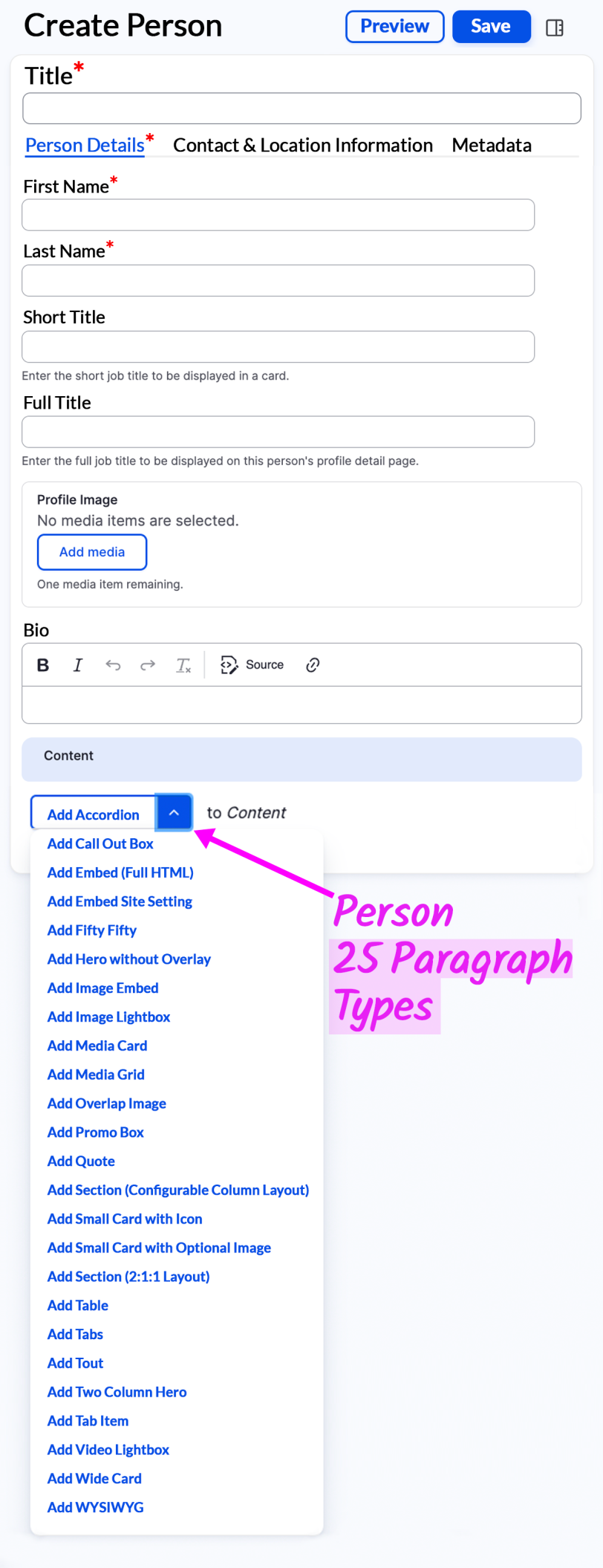Content Types
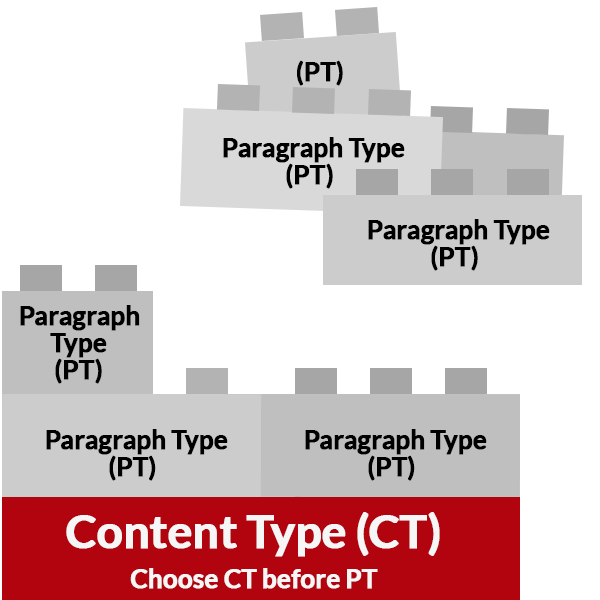
Content types are essential building blocks in Drupal. They provide structure and fields for different types of content, making it organized and easy to manage. Choosing the appropriate content type and filling its fields with accurate information improves the user experience and enhances search engine indexing.
Understanding the nine different Content Types (CT) can be overwhelming at first. Thinking of them as “Feature” pages (a collection of gathered information), “Editorial Detail” or “Engagement Detail” pages (specific detailed information) can help you see how they complement each other. With these distinctions in mind, you can create a content plan that resonates with your audience and achieves your goals.
“Feature” pages | Homepage Basic page Listing page
“Editorial Detail” pages | News Article Blog page Publication page
“Engagement Detail” pages | Event page FAQ page Person page
Tips: To add a new page or item to the site, use the top Admin menu to navigate to Content > Add content and select what content type node you would like to create on the site. There are nine Content Types available: Basic page, Blog, Event, FAQ, Homepage, Listing, News Article, Person, and Publication.
“Feature” pages
Showcase a collection of information that is often sourced from detail pages. These pages aim to engage visitors by providing dynamic content that entices them to explore further. Your Homepage, Basic, and Listing page can be thought of in this matter.
Homepage
A good homepage should introduce your site and tell visitors who you are, what you do, and how they can engage with your site. It should speak to your audience and provide clear calls-to-action (CTAs) that encourage them to take specific actions. The best homepages are dynamic and adaptable, constantly evolving to meet the needs of visitors.
What is a Hero with Overlay?
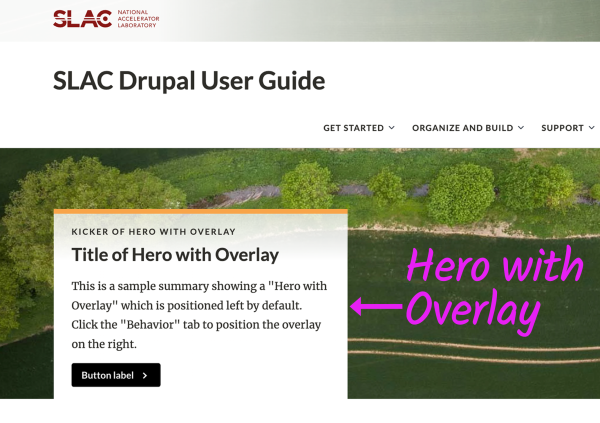
A high-quality full-screen image at the top of your page can create a lasting impression. A "Hero with Overlay" can add a personal touch that builds credibility and trust. Include a button to maximize its impact and allow visitors to be in the driver’s seat to go where they want next.
Note: Like all other content types, add content to the main content body by selecting from a dropdown of available Paragraph Types.
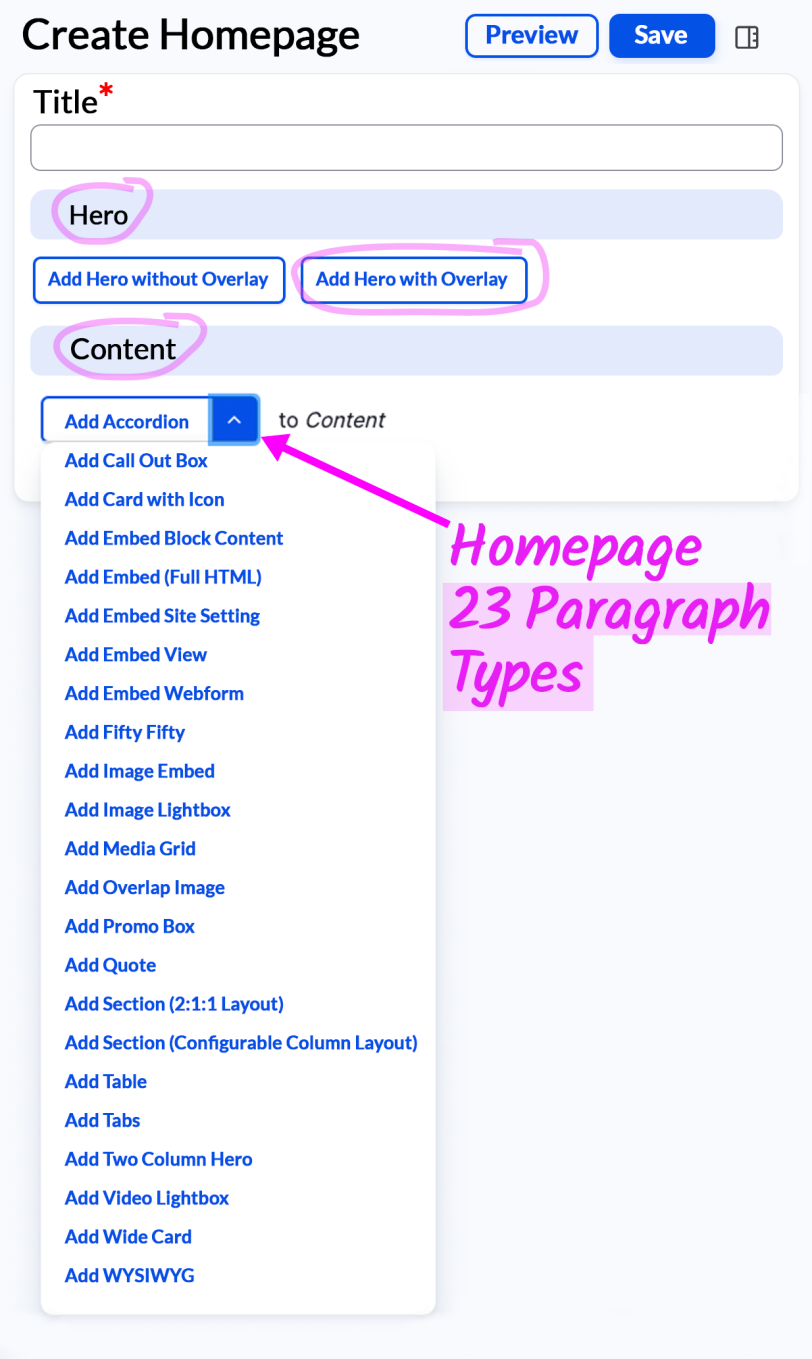
Basic page
Typically Basic pages are used for static content that can (but are not required to) be linked into the main navigation bar. This is one of the most "basic" content types and can be very flexible. An example commonly found on websites is an About Us page.
What is Metadata?
The Metadata tab in Drupal Basic page lets you add information about the page that search engines and software use to categorize the content. A well-written Metadata can entice users to click on your link when it appears in search results, increasing your site’s traffic.
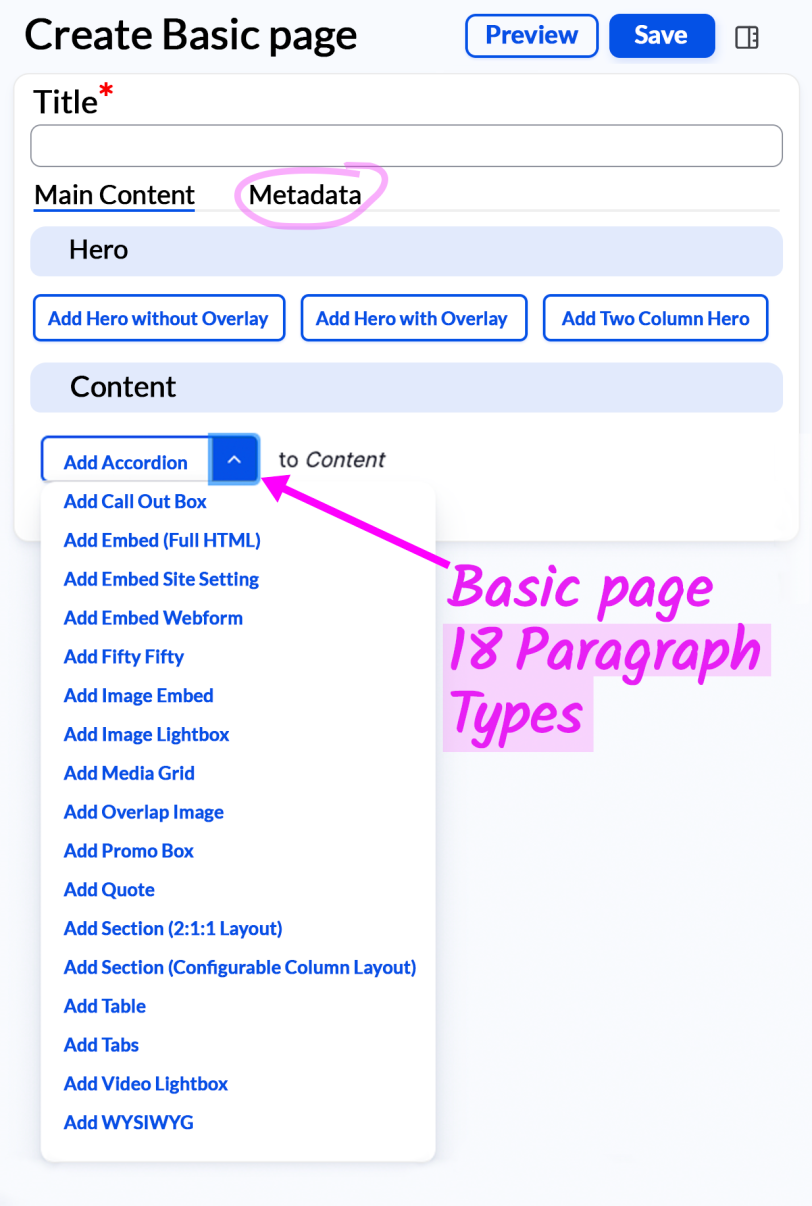
Listing page
The Listing page displays related content items (such as events, news articles, or people) in a structured format, with filters available to help visitors find specific content. Each item may have its own page with additional details.
What is a Two Column Hero?

This hero option enhances engagement. To add your message and call to action, use a WYSIWYG (PT) for the [A] 'Left Column Content.' For the [B] 'Right Column Content,' spotlight an event or news by typing the page title in the Edit screen and selecting from autofill suggestions.
[C] Note 1: Site editors must manually update the content that was featured in the "Right Col. Content" spotlight once the event or news item has passed.
[D] Note 2: When selecting the 'Embed View' PT in the Edit screen, a 'Filter' button will be displayed on the Listing page. Learn how Taxonomies power Filters on Listing Pages to pare down a user’s search.
Note 3: Content such as Events, Publications, News Articles, etc., must be published to show up on a listing page. For example, if a Listing page for Events is created but no events are published, the Listing page will appear empty.
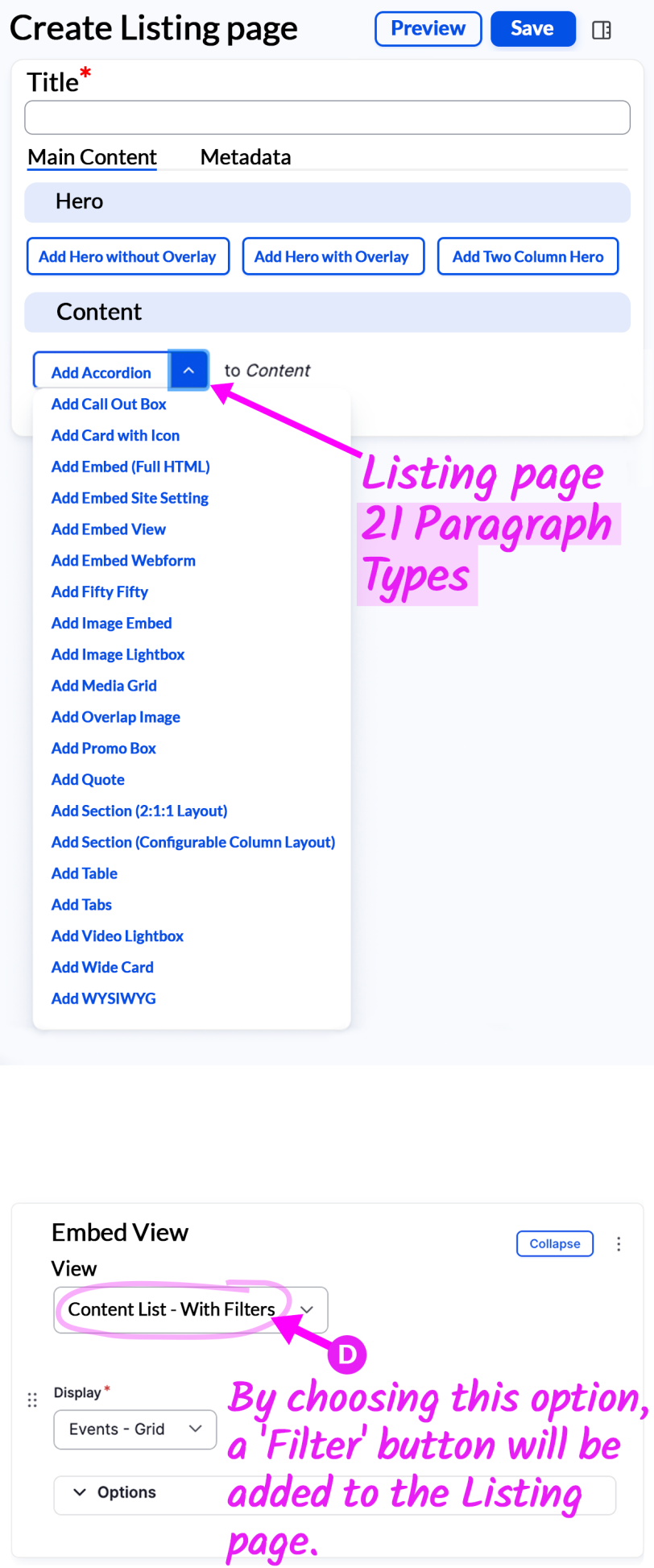
“Editorial Detail” pages
Add specific editorial detailed information to News Articles, Blogs, and Publications. These “Editorial Detail” pages must be saved and published before they appear on a Listing page as a collection of related content items in a structured format.
News Article
Typically is news about recent events or developments such as sharing informative updates from your organization. This could include awards, discoveries, new initiatives, successes, or results.
You must add a title, but all other fields are optional. Fields include Publication Date, News Type, Author Info/link, and Dek.
Note: A "dek" is a brief summary that appears below the headline or page title - in smaller font - on the list page and on the article page. To add a summary, you can find the "dek" field directly below the 20 Paragraph Types that are available in the dropdown menu for a News Article (CT).
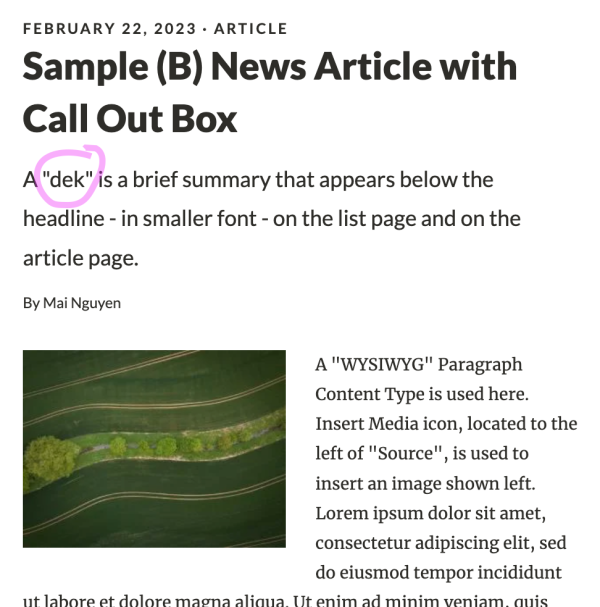
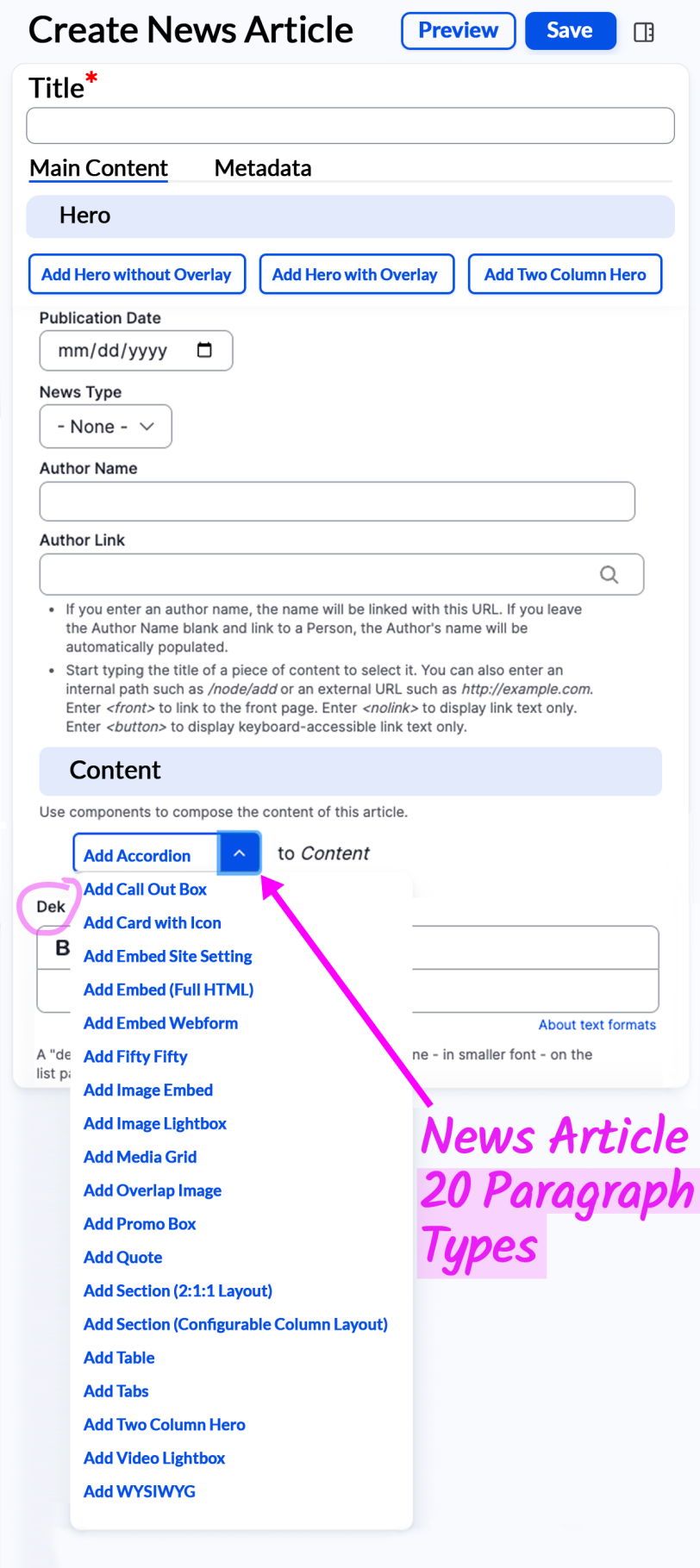
Blog page
A blog can serve as a powerful tool for individuals and organizations to connect with audiences, build relationships, and share unique perspectives and insights. Typically, it features articles written in a conversational style on a wide range of topics, such as news, commentary, opinions, reviews, personal experiences, business content, and more.
A blog is usually devoted to a subject of interest to a target audience—such as the Office of Economic Impact and Diversity, Office of Electricity, LGBTQ+ COMMUNITY, or Drupal.
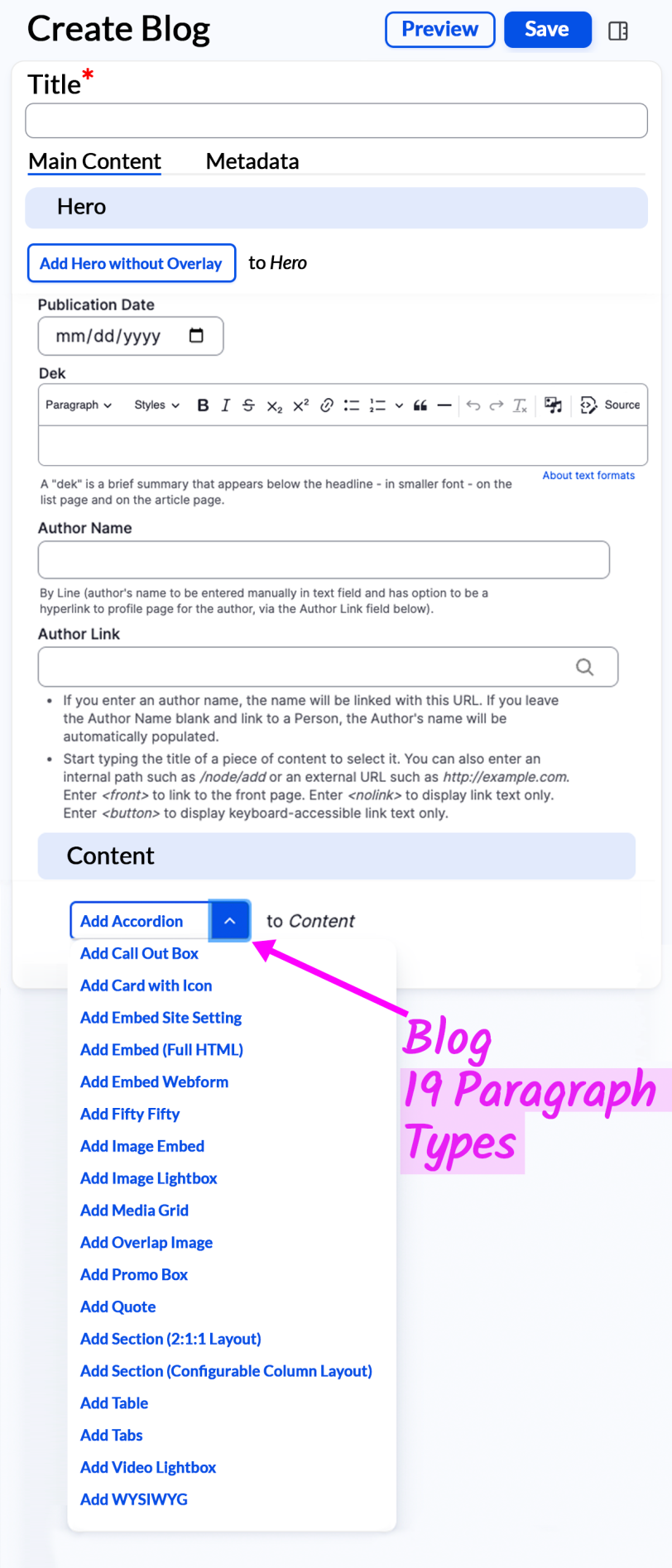
Publication page
Use the Publication (detail) page to share publications your organization has published. You can list books, journal articles, news and magazine articles, and thesis dissertations.
The required fields are Title and Publication Type. Additionally, you can add author information, a link to an external URL, or to a detailed individual publication page. Create the publication content by selecting from a dropdown of available paragraph types, but feel free to leave the layout informative and straightforward.
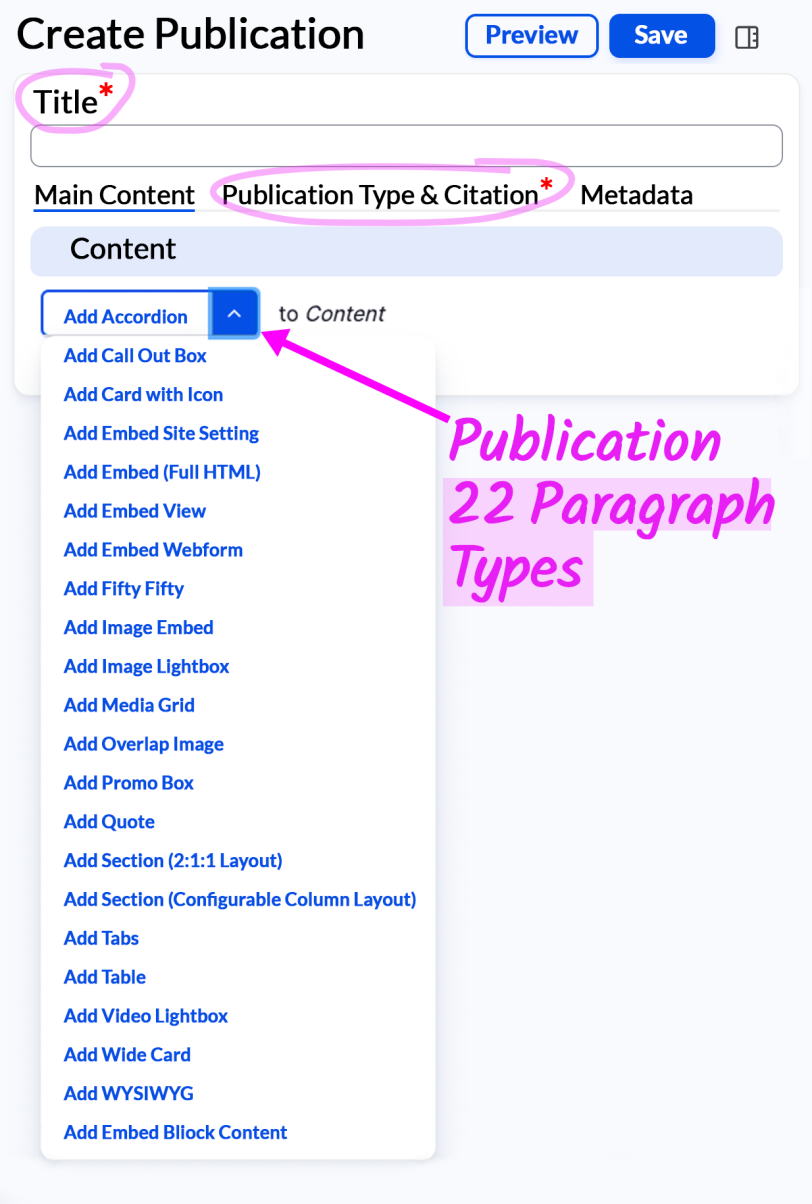
“Engagement Detail” Pages
Shows specific content types best described as Events, FAQs, or Persons.
Event page
Create an Event (detail) page to house information about any upcoming events at your organization. You can also include an event hosted by others and add an external link. In addition to a Title field, a content editor must fill out Date and Time information. The Event (detail) page does not have paragraph types.
Other optional fields include Conference Call links, the ability to Embed Video and Location information, a Description section, and a Sponsor section. Don’t forget to let your users know where they can register or buy tickets!
Note: To add an external event, click the "Is external event" toggle switch button to activate it. If checked, then this event will not have a detail page and all references will link to the URL included in the external link field.
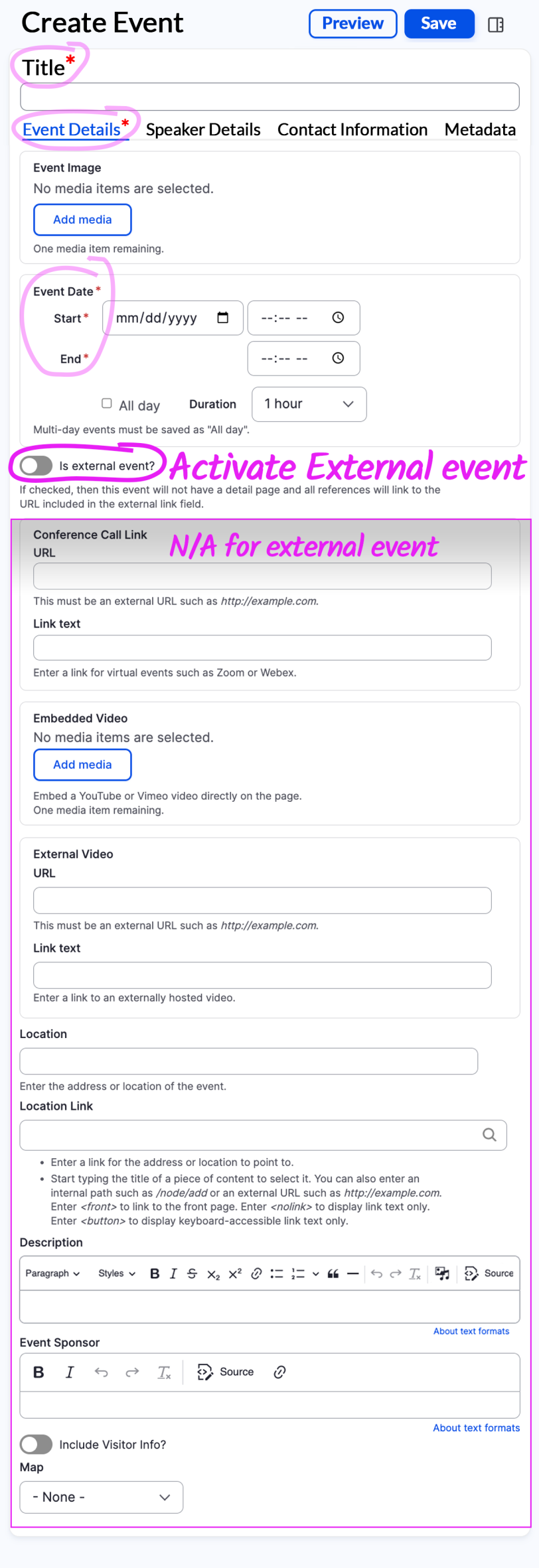
FAQ page
An FAQ (Frequently Asked Questions) page is a key part of a knowledge base devoted to answering site visitor queries in a question-and-answer format. It’s an organized collection of important information that site visitors are often looking for in relation to your products and services.
If you want to make an FAQ section that resonates with your customers, carefully think about what questions to include, consider who will answer (and how), and offer next-step solutions for when FAQs aren’t enough.
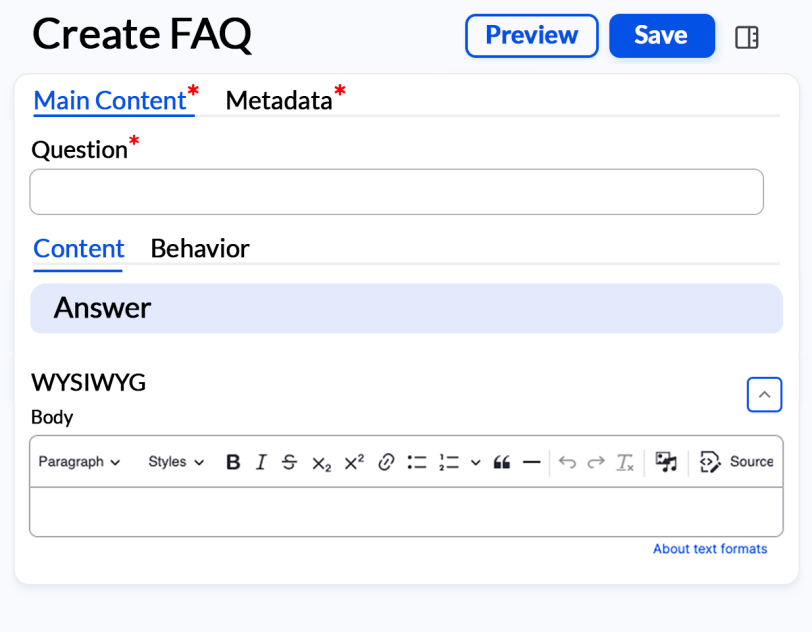
Person page
Having a "Person" page on your website is essential to building connections and establishing trust with your site visitors. Here are some reasons why:
- People want to know who makes up your organization and learn more about each team member
- A "Person" page makes your organization more personable and establishes trustworthiness
- It shows that your organization values people and their talents, while also making team members feel valued and appreciated
- The page can help website users find the correct person to speak to within your organization
- Seeing familiar faces on your website makes visitors feel more at ease when meeting in person
- Having a "Person" page can increase website visits and engagement.
